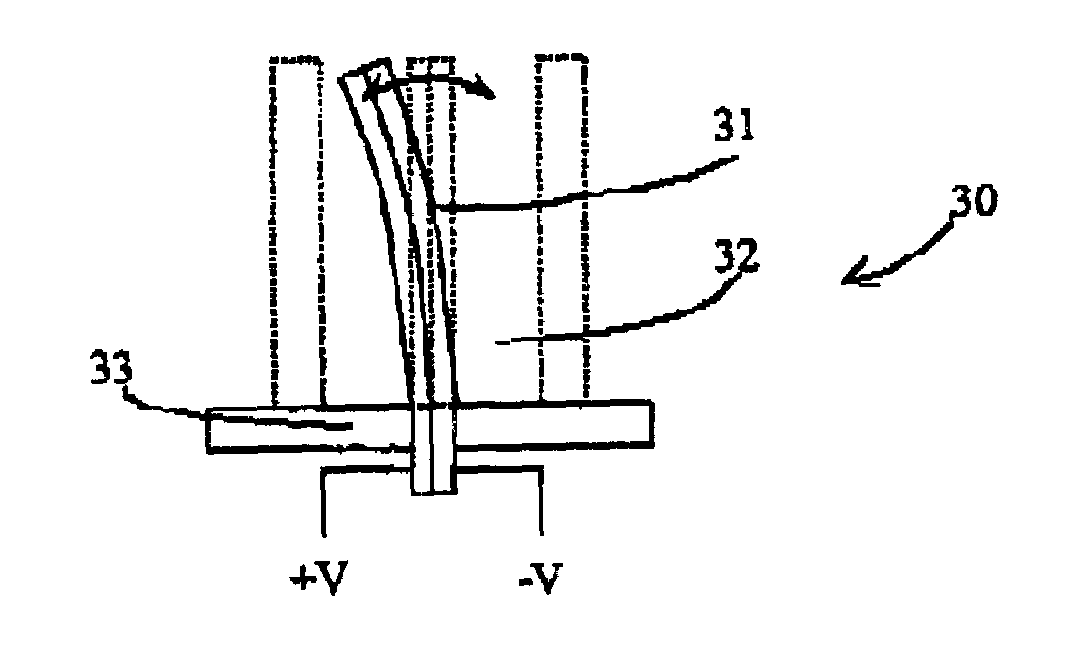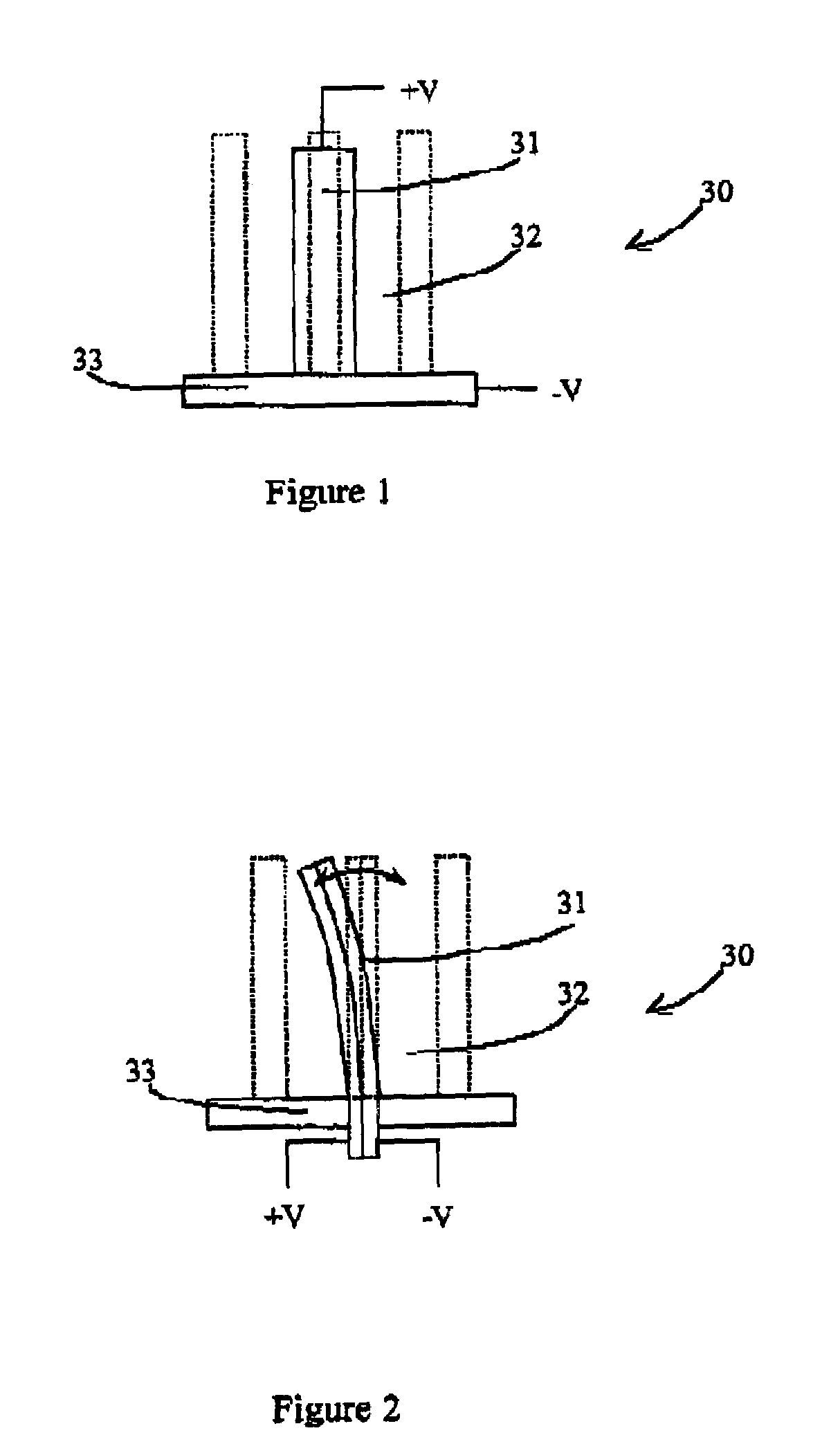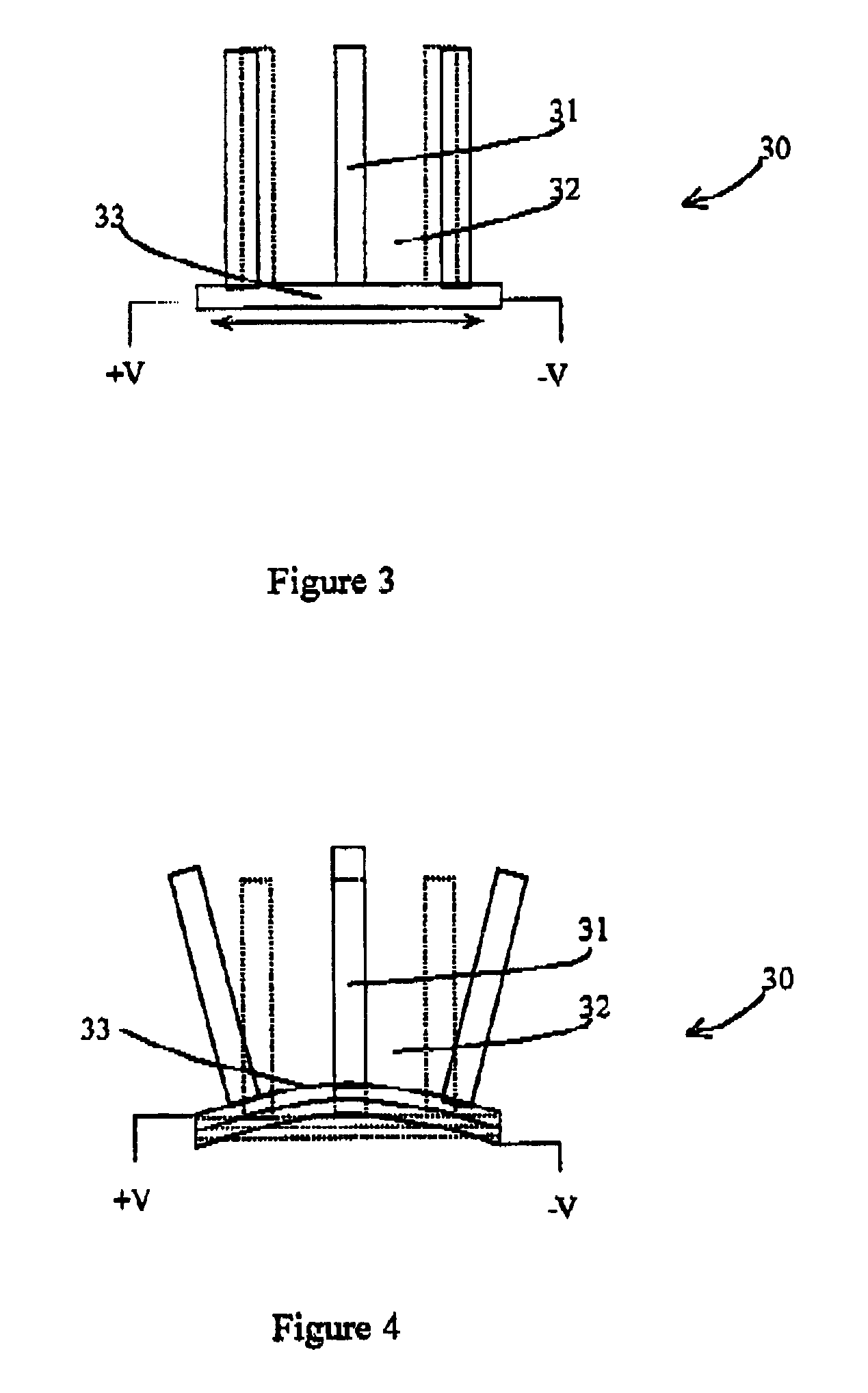Configurable photonic device
a photonic device and configuration technology, applied in the field of manmade photonic crystals, can solve the problems of unintended imperfections, limitations in the fabrication process, and inability to readily find the periodicities of photonic crystals in nature, and achieve the effects of relaxed constraints, improved yields, and amenable to open loop control
- Summary
- Abstract
- Description
- Claims
- Application Information
AI Technical Summary
Benefits of technology
Problems solved by technology
Method used
Image
Examples
Embodiment Construction
[0060]A first preferred embodiment of the invention, in which the physical geometry of a photonic crystal may be configured due its intrinsic (or material) properties, is shown schematically in FIG. 1. The photonic device comprises a photonic crystal 30 which includes pillars of a piezoelectric material 31 separated by air 32 on a support 33. A voltage applied across the piezoelectric pillar 31 will configure the pillar such that the dimensions (size or shape) of the pillar will be changed (from the dotted line to the solid line). The resulting change in periodicity will alter the optical properties of the photonic crystal.
[0061]An advantage of configuration of the photonic device element by directly changing the geometry of the photonic crystal itself is that it leads directly to changes in the optical properties of the photonic device. The benefit of configuration of the photonic device element using the support is that there is no restriction on the selected photonic crystal that...
PUM
| Property | Measurement | Unit |
|---|---|---|
| wavelengths | aaaaa | aaaaa |
| reflectivity | aaaaa | aaaaa |
| refractive indices | aaaaa | aaaaa |
Abstract
Description
Claims
Application Information
 Login to View More
Login to View More - R&D
- Intellectual Property
- Life Sciences
- Materials
- Tech Scout
- Unparalleled Data Quality
- Higher Quality Content
- 60% Fewer Hallucinations
Browse by: Latest US Patents, China's latest patents, Technical Efficacy Thesaurus, Application Domain, Technology Topic, Popular Technical Reports.
© 2025 PatSnap. All rights reserved.Legal|Privacy policy|Modern Slavery Act Transparency Statement|Sitemap|About US| Contact US: help@patsnap.com



